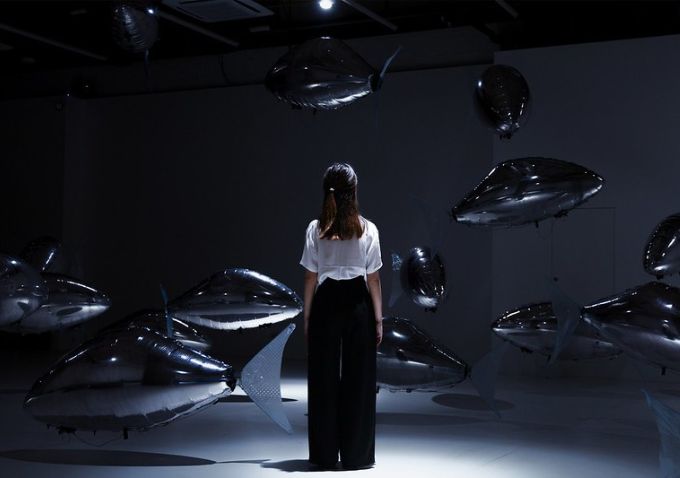The Ars Electronic Electronica Festival 2024, titled “Hope, Who Will Turn the Tide” [04-08/09/2024]. As usual, the festival was held in Linz, Austria and took place over a series of 4 days. As an art historian and curator with a background in cultural management, I managed to visit this year’s festival and am sharing my overview with Creatives Unite.
I took a specific interest in those who sought to challenge, provoke, and inspire collective reflection and action. For example, the anti-capitalist message of Tega Brain, the social awareness message of LaJuné McMillian, the ecological message of Sonandes, Marc Vilanova’s environmental concerns, and issues of identity by Stefan Schönauer. The works were geared towards using arts as a channel for discussing change.

Black Movement Library / LaJuné McMillian (US), Photo: LaJune McMillian, CC BY-NC-ND 2.0
Early on, I felt the atmosphere being musty and dark, evoking the uncomfortable feelings we experience during uncertain times. As the title suggests, the works address various aspects of hope and how art and technology can support and restore our lost hope in society. I had the realisation that anyone’s willingness to create and recreate the conditions in which they want to live is hope in itself. The kind of engagement the festival showcases, are those trying to shape a more conscious, sustainable and inclusive future. This context feels artistic by default as it encourages experimental practice and collective effort.
In my opinion, whether something is art or not is no longer relevant—it became irrelevant after meta-modernism (a movement that acts as a pendulum between modernism and postmodernism). We have moved away from such visions of urinals, tins of soup, and bananas challenging the nature of art. We have more pressing issues now: art must contribute to this. What’s more important is giving a voice to new groups of people, supporting existing artists and institutions, redefining our identities and cultural narratives, and strategically shaping our future— deciding who we want to become, rather than wasting time on superficial questions. I applaud the festival for laying an artistic foundation to creating relatable and accessible approaches for understanding, engaging, and interacting with complex scientific concepts and the relentless tensions of our time. We saw art as a tool for understanding, supporting education, and furthering critical messages, using whatever tools the artist felt fit to do so.
Arriving in Linz
My trip to Linz was brief but intense—a friend and I travelled to Linz together eager to see the festival and to visit the city for the first time. It was my first time visiting both Linz and the festival, so with the prospects in sight it was quite overwhelming for me.
This year’s festival attracted over 110,000 visitors—including myself. Linz was, once again. the centre of the European contemporary art scene. The shows took place as multiple shows: the Prix Ars show at the Lentos Art Museum, exhibitions at JKU MED Campus, the University of Art and Design Linz, Deep Space 8K etc. The city opened up, allowing every visitor to get to know the local artistic scene and enjoy the vibrant atmosphere of Linz.
I arrived in the city from Graz, a city three hours away by train where I am currently on a fellowship study program at the University of Graz, researching curatorial practices for born-digital artworks and exhibitions. Born-digital is an art aesthetic dealing with digital from-creation artworks, not analogue works subsequently made digitally. Ars electronica therefore became part of my research. I was glady saturated with artwork, as after spending close to 36 hours in the city, I am very proud to say that 24 of those were looking at art. For Five days — including the Pre-Opening Walk on the 3rd - watching performances, visiting shows, and mingling with artists, curators, and the audience.
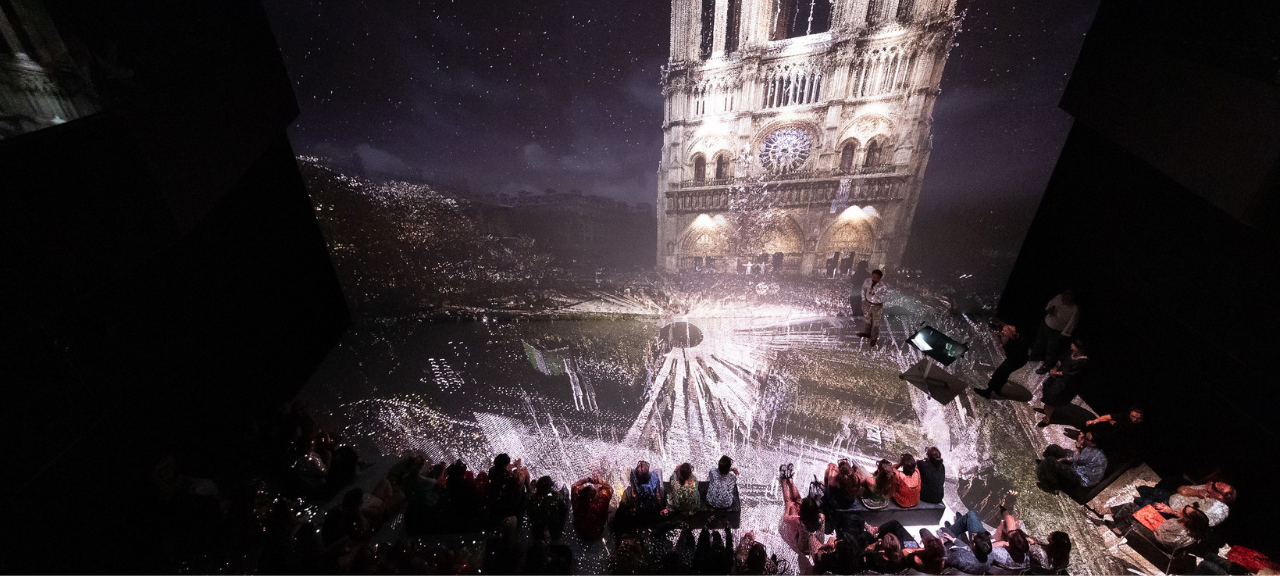 Pre-Opening Walk / Notre-Dame Immersive / Ars Electronica (AT), Iconem (FR), Histovery (FR), Photo: tom mesic, CC BY-NC-ND 2.0
Pre-Opening Walk / Notre-Dame Immersive / Ars Electronica (AT), Iconem (FR), Histovery (FR), Photo: tom mesic, CC BY-NC-ND 2.0
An abandoned space transformed through Art
The main gallery of the festival is situated in the former post-distribution centre, Postcity, with 80,000 square metres of usable space spread over several levels. It has been used as the main space for more than forty years and has a strong legacy. The exhibitions in the main space were spread across the four floors: the main theme show "HOPE: The Touch of Many" and the Ars Electronica Features, Campus Show, the S+T+ARTS Winners Show, the Create The World segment, a show dedicated to pieces from the Faculty of the Arts and Design University of Linz were among those that featured.
The theme show “HOPE: The Touch of Many,” co-curated by Olga Tykhonova (UA) was divided into four sections: a prologue, two in-between chapters, and an epilogue. The exhibition included an array of installations, video art, documentation projects, AI technology and web art-based pieces, and interactive artworks.
Bridging Visions and Action

Just asking for a friend / Time’s Up (AT), Photo: Tom Mesic, CC BY-NC-ND 2.0
The prologue emphasises that actionable hope bridges the gap between envisioning a better future and acting in the present. Artists, through their ability to inspire, move us to act by igniting hope. Fostering these principles, the entrance piece, “Just Asking for a Friend” by Time's Up (AT) cuts straight to the heart of this year's theme by asking each visitor directly, “How Dare You Maintain Hopeful Visions in Times Like These?” projected on screens hanging from the ceiling, aiming to spark conversations and encourage visitors to actively participate in shaping the world. In another projection, their work asked visitors, “Is hope a privilege? Or is hope a muscle, a practice, a ritual, or a discipline? An axe, a tactic, or a strategy? A distraction, a tangent, an excuse?” This placed visitors in a position of critical thinking and emotional engagement, urging them to act rather than just dream of a better future. Time’s Up is celebrated as one of the spotlight artists.
Another example of the art bringing contemporary socio-political schisms to the fore was "Anatomy of Non-Fact Chapter 1 — AI Hyperrealism” by Martyna Marciniak (PL). It drew from a viral moment in contemporary history—the fake news, AI-generated image of the “Balenciaga Pope,” which swept across the internet. The project featured a video art presentation of a real-life person resembling the Pope, with the actual jacket and accessories featured on display as if they were sacred.
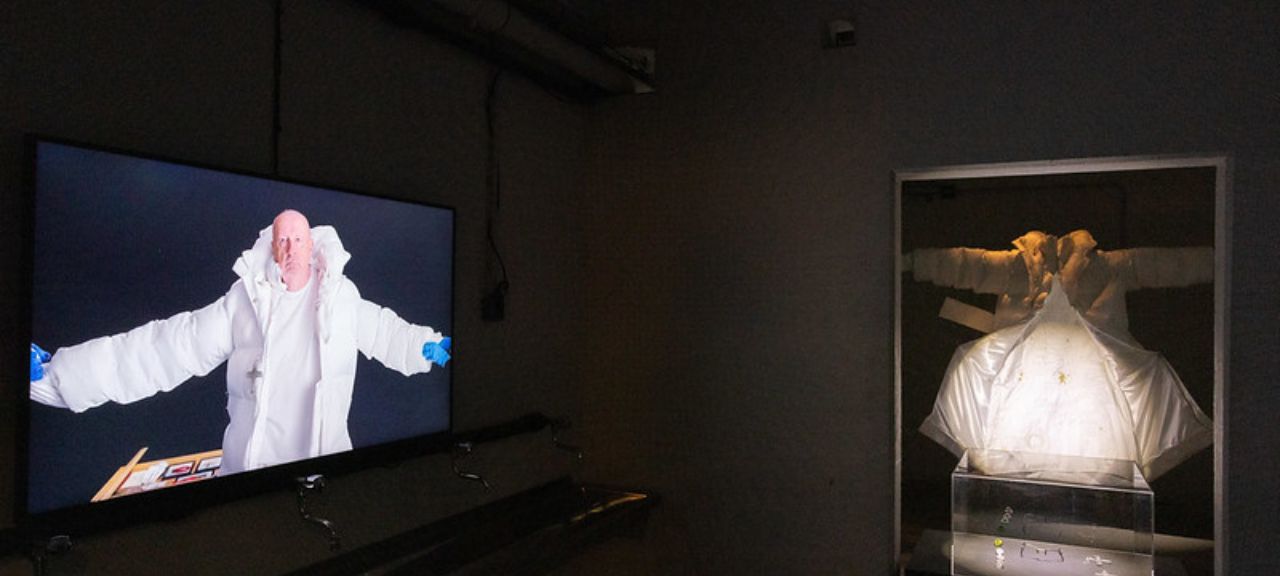 Anatomy of Non-Fact / Martyna Marciniak (PL), Photo: tom mesic, CC BY-NC-ND 2.0
Anatomy of Non-Fact / Martyna Marciniak (PL), Photo: tom mesic, CC BY-NC-ND 2.0
Another prominent issue moving on through the exhibition was the exploration of cultural diversity through food (“Project Patching - Ti hoeh koe, AI and Geocultural Bias Experiment Project” by Dimension Plus (TW)), an installation that creates superfood by following a composting process in real-time, with the option to taste it yourself—at your own risk (“Compost as Superfood” by Masharu Studio (NL)), a growing fictional image archive revealing gender-specific biases used by AI (“AI and the Art of Historical Reinterpretation” by Claudia Larcher (AT)).
Stealing time for the planet
Two of the spotlighted artists Sam Lavigne (US) and Tega Brain (AU) created "Cold Call: Time Theft as Avoided Emissions", an interactive installation and web-based art piece where visitors had the opportunity to call executives in the fossil fuel industries and keep them on the line as long as possible.
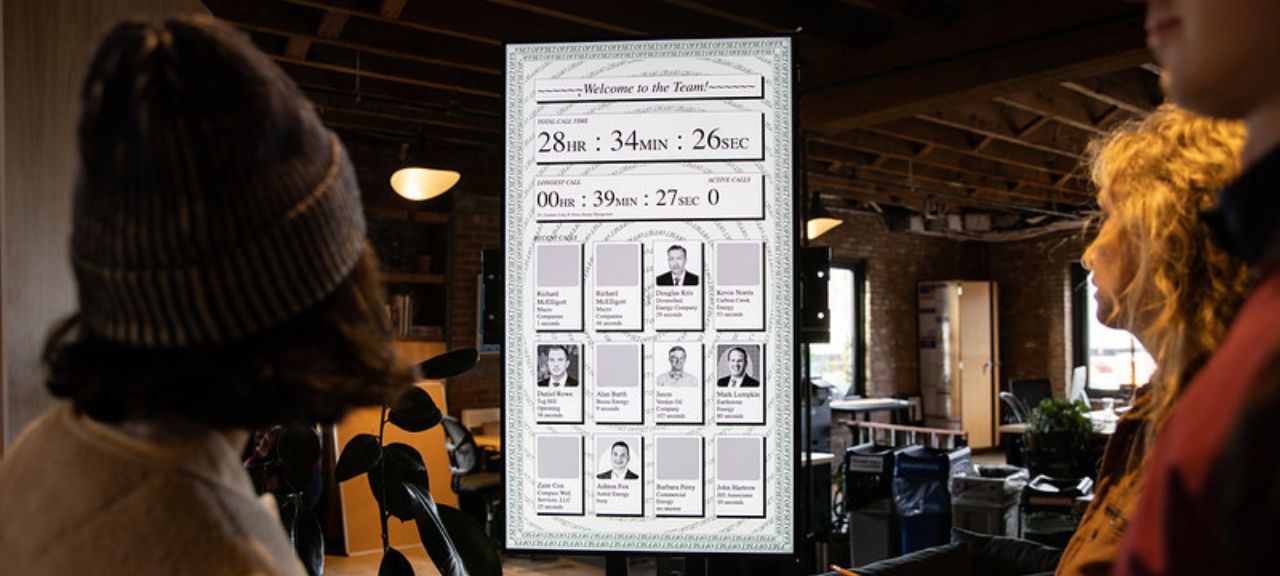 Cold Call: Time Theft as Avoided Emissions / Sam Lavigne (US), Tega Brain (AU), Photo: tom mesic, CC BY-NC-ND 2.0
Cold Call: Time Theft as Avoided Emissions / Sam Lavigne (US), Tega Brain (AU), Photo: tom mesic, CC BY-NC-ND 2.0
The strategy of time theft was used to slow down productivity and sabotage their work. The art piece was heavily trafficked by people using the call centre, trying to distract executives with fake appointments and contributing to the grand sabotage, amassing over 74 stolen hours by Saturday the 7th.
This project resonated with the roots of the Hacktivism movement and early net artworks, highlighting the importance of collective practices within communication realms, and how systems can be hijacked for the means of materialising hope.
In response, “Solar Protocol” by Tega Brain, Alex Nathanson (US), Benedetta Piantella (US), and the Solar Protocol Collective (INT) created a planetary-scale network of solar-powered servers. Installed and maintained by volunteers around the world, the servers collectively host the Solar Protocol web platform at http://solarprotocol.net/, serving the site from whichever server absorbs the most sunlight and thus produces the most energy at the time. The project provokes new ways of thinking about intelligence and automation, exploring what a low-carbon internet infrastructure and web design might look like. It hosts a solar-powered web for the project's community and functions as a kind of planetary-scale, virtual artist-run space.
Brain mentions in their description, “We’ve seen enough climate art about grief and loss and mourning. I make art to point to the agency we have in the climate crisis. We need art that experiments with system redesign, and degrowth aesthetics, and cultivates imaginaries for climate mitigation and adaptation. I also want to see climate art about reaching those most responsible for the crisis. Where’s the art about revenge?”
“Sensing Environments,” on the other hand, emphasises the sweet spot of the grey area when cultivating meaningful hope. The openness and often liminality of emotional and sensorial experiences play a crucial role in transforming awareness into action. “Iron 56” by Carlos Sfeir Vottero (CL/ES) features an intertwined series of compasses hanging from the ceiling. These mobile structures are calibrated to point toward the South Pole, inviting humans to engage with the fundamental forces of nature that organise the universe and shape the core of our planet. This work is an example of thinking with systems and sense when they are out of balance.
 Cascade Marc Vilanova (ES), Photo vog.photo, CC BY-NC-ND 2.0
Cascade Marc Vilanova (ES), Photo vog.photo, CC BY-NC-ND 2.0
“
Cascade” by
Marc Vilanova (ES), is a large-scale light and sound installation resembling a waterfall. Waterfall infrasounds are vital for the navigation of migratory birds, but recent noise pollution threatens this navigation. “Cascade” attempts to reproduce infrasonic recordings of waterfalls using a series of speakers that cannot emit such low frequencies. This function generates vibrations that activate an optical fibre through which the sound falls, creating a curtain of light that visualises the sound waves, offering an alternative form of listening. This piece consistently had over 30 people interacting with it attempting to understand how it vibrated and created these sounds.
Between reality and imagination
Lastly, “
Flock Of” by
bit. studio (TH) was one of the pieces that drew the most social media attention. This artwork provides a supernatural experience where a fish sculpture moves around the room floating above the ground. People were sitting on the floor, observing and engaging with spectacle. Blurring the boundary between imagination and reality, helium balloons, each with an electronic brain, become a living organism—a flock of aerial fish. Sensors, software, and physics combine to create a spectacle that redefines our perception of the natural world.
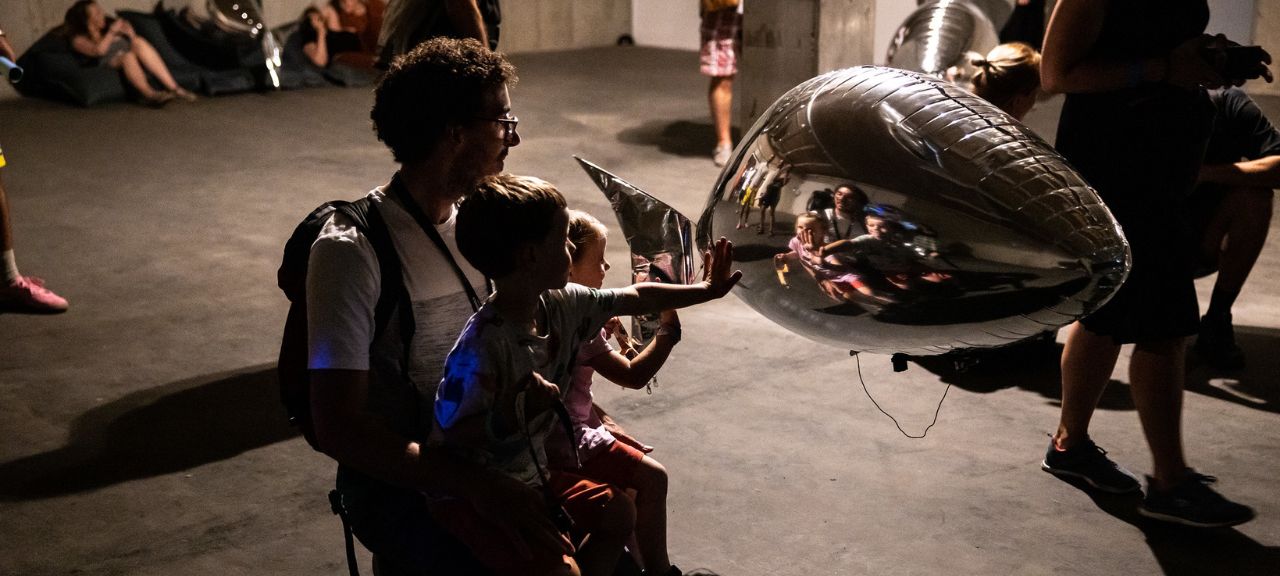 FLOCK OF / bit.studio (TH), Photo: vog.photo, CC BY-NC-ND 2.0
Digital Ruins / Stefan Schönauer (AT), Photo: Stefan Schönauer, CC BY-NC-ND 2.0
FLOCK OF / bit.studio (TH), Photo: vog.photo, CC BY-NC-ND 2.0
Digital Ruins / Stefan Schönauer (AT), Photo: Stefan Schönauer, CC BY-NC-ND 2.0
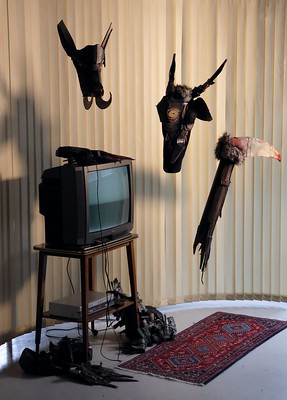
In the third chapter, titled “Ecologies of Actions,” we observe assemblages of interactions between species, environments, and humans. As Anab Jain (Superflux) emphasises, to address global emergencies we must see ourselves as deeply intertwined with nature rather than separate from it. “Digital Ruins” by Stefan Schönauer (AT), who closely collaborated with the Design Investigations Studio at the University of Applied Arts in Vienna, led by Anab Jain, another one of the four artists spotlighted by this year’s festival. “Digital Ruins” is an installation and video art piece that envisions a future in which we are forced to leave behind our digital archives.
How can we cope with the loss of our most important memories and the grief that comes from being expelled from our digital spaces? In this dystopian digital reality that leaves us powerless, we turn back to traditional and folkloric ways of self-defence to save ourselves and our memories. - Stefan Schönauer
In this chapter, we saw products from a startup named Pawsitive Charge, founded by Julia Hahnl (AT/JP). Dog owners can now use wearable devices such as leashes or gadgets that charge phones using energy from walking, thanks to piezoelectric elements combined with solar panels, promoting a greener lifestyle.
“Human Powered Toaster” by Florian Sapp (AT), demonstrates how much power is required for everyday activities and what numbers like 100 watts mean. Moreover, Tiziano Derme (IT) and Nadine Schütz (CH) presented “Fu(n)ga”, which is a spatial and bio-sonic experiment exploring the relationship between enzymatic processes with fungi, controlled environments, and acoustic vibrations; while Navid Navab (IR/CA) and Garnet Willis (CA) presented “Organism + Excitable Chaos”, featuring a robotically operated century-old pipe organ that produces continuous sound and movement.
The exhibition’s epilogue focuses on artist LaJuné McMillian (US), and her work in storytelling and community care. The last artist's focus within her practice is questioning software, pushing its boundaries, breaking it, and ultimately telling stories through it. The exhibition closes the circle by embracing an artist’s ritual. “The Black Movement Library” projects Movement Portraits and Spirit and Child showcase the evolution of LaJuné McMillian’s art practice, integrating performance and extended reality tools to celebrate and dive into Black embodied realities. Video projections presented her work, research, and methodology.
Before heading upstairs to explore other shows or remaining pieces of the theme show scattered on other floors, like one of my favourites, “Exploration and Exploitation – AI Interactive Video” by Simple Noodle Art (TW): Zi Yin Chen (TW) and Hsiang Feng Chuang (TW), which offers a critical yet humorous depiction of an office worker coming home and clicking on a YouTube-recommended video featuring an “AI virtual companion” aimed at exploring whether AI exacerbates social divisions. At the same time, real-time cameras record visitors, analysing and making judgements via our facial expressions and posture to predict our feelings and desires.
Critical reflections
As the title suggests, the works address various aspects of hope and how art and technology can support and restore our lost hope in society. Hope is not passive optimism or a substitute for action but a foundation for collective power and transformation. As a personal round up, Ars Electronica showcases art, that through storytelling and imagination, can ignite actionable hope, fostering compassion, collaboration, and solidarity. Artists inspire us to envision new possibilities and take meaningful action, bridging the gap between imagining a better future and acting in the present.
Simone Niarou
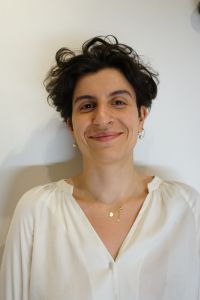
Simone Niarou (she/they) is a cultural manager, art historian, and aspiring curator. She has collaborated with organisations such as the European Capital of Culture Eleusis 2023, Athens & Epidaurus Festival, Stegi Onassis, PCAI - Polygreen Culture & Art Initiative, Delta Pi, Duncan Dance Center, Lykofos Production, Snehta Residency, Stoa42 Gallery, International Theatre Festival of Milos, Museum of Basil & Eliza Goulandris Foundation, Documenta14, Athens Biennale 4to5, Athens International Film Festival, and Kappatos Gallery Rooms19.
Her interest in contemporary art that engages with the local community, along with her interdisciplinary curatorial and academic research focused on digital culture and technology, motivates her to find alternative narratives of supporting contemporary and modern cultural heritage. Currently, she focuses on curatorial practices for born-digital artworks and shows, reflecting the attention and care a digital user needs for such activity while developing her master’s thesis under the guidance of the University of Piraeus and Stegi Onassis, and the University of Graz in Austria, and Ars Electronica Linz in Austria.
Edited by Demi Spriggs at Creatives Unite.








